Roberto Amadini
On the evaluation of (meta-)solver approaches
Feb 17, 2022



Abstract:Meta-solver approaches exploits a number of individual solvers to potentially build a better solver. To assess the performance of meta-solvers, one can simply adopt the metrics typically used for individual solvers (e.g., runtime or solution quality), or employ more specific evaluation metrics (e.g., by measuring how close the meta-solver gets to its virtual best performance). In this paper, based on some recently published works, we provide an overview of different performance metrics for evaluating (meta-)solvers, by underlying their strengths and weaknesses.
sunny-as2: Enhancing SUNNY for Algorithm Selection
Sep 07, 2020



Abstract:SUNNY is an Algorithm Selection (AS) technique originally tailored for Constraint Programming (CP). SUNNY enables to schedule, from a portfolio of solvers, a subset of solvers to be run on a given CP problem. This approach has proved to be effective for CP problems, and its parallel version won many gold medals in the Open category of the MiniZinc Challenge -- the yearly international competition for CP solvers. In 2015, the ASlib benchmarks were released for comparing AS systems coming from disparate fields (e.g., ASP, QBF, and SAT) and SUNNY was extended to deal with generic AS problems. This led to the development of sunny-as2, an algorithm selector based on SUNNY for ASlib scenarios. A preliminary version of sunny-as2 was submitted to the Open Algorithm Selection Challenge (OASC) in 2017, where it turned out to be the best approach for the runtime minimization of decision problems. In this work, we present the technical advancements of sunny-as2, including: (i) wrapper-based feature selection; (ii) a training approach combining feature selection and neighbourhood size configuration; (iii) the application of nested cross-validation. We show how sunny-as2 performance varies depending on the considered AS scenarios, and we discuss its strengths and weaknesses. Finally, we also show how sunny-as2 improves on its preliminary version submitted to OASC.
A Survey on String Constraint Solving
Mar 01, 2020

Abstract:String constraint solving refers to solving combinatorial problems involving constraints over string variables. String solving approaches have become popular over the last years given the massive use of strings in different application domains like formal analysis, automated testing, database query processing, and cybersecurity. This paper reports a comprehensive survey on string constraint solving by exploring the large number of approaches that have been proposed over the last decades to solve string constraints.
SUNNY-CP and the MiniZinc Challenge
Jul 05, 2017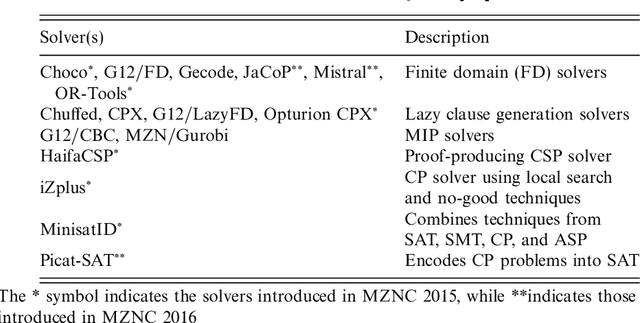
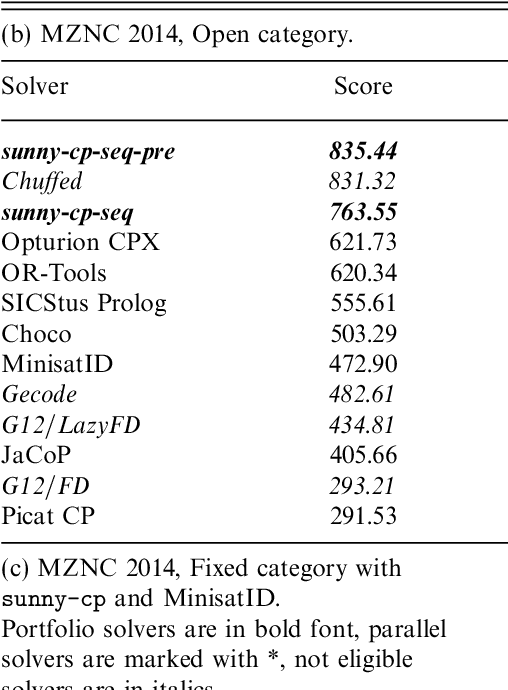

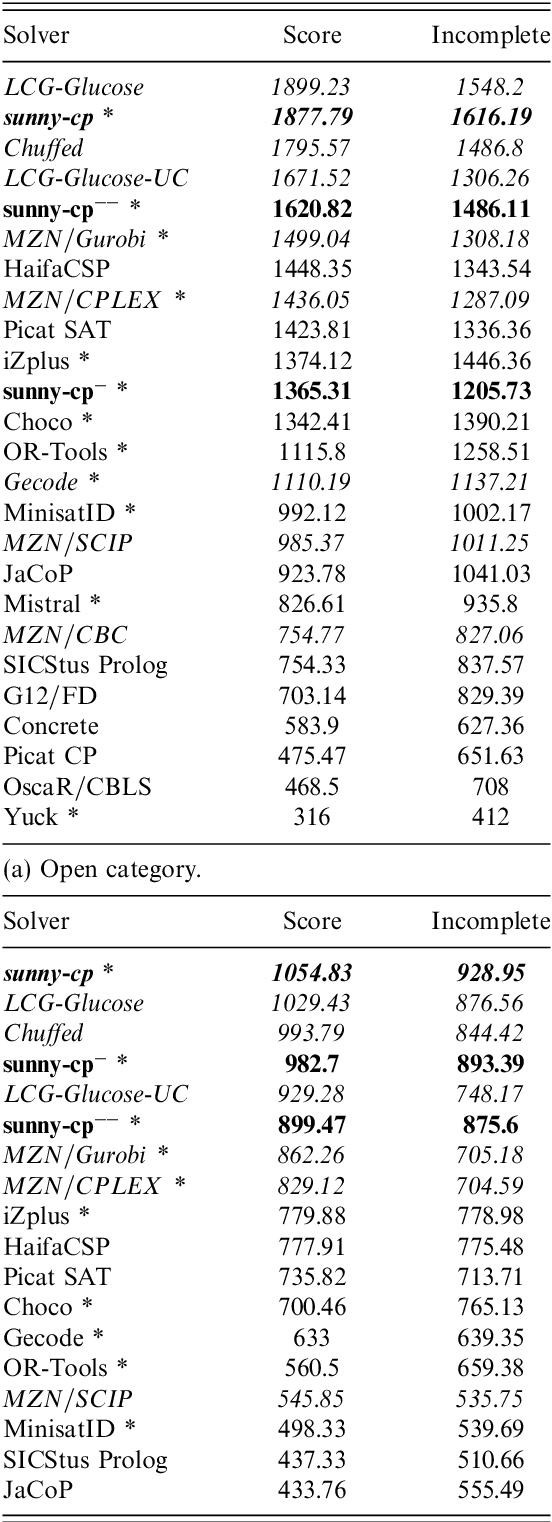
Abstract:In Constraint Programming (CP) a portfolio solver combines a variety of different constraint solvers for solving a given problem. This fairly recent approach enables to significantly boost the performance of single solvers, especially when multicore architectures are exploited. In this work we give a brief overview of the portfolio solver sunny-cp, and we discuss its performance in the MiniZinc Challenge---the annual international competition for CP solvers---where it won two gold medals in 2015 and 2016. Under consideration in Theory and Practice of Logic Programming (TPLP)
A Multicore Tool for Constraint Solving
Apr 30, 2015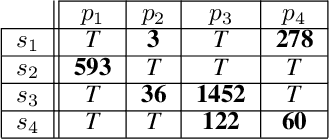
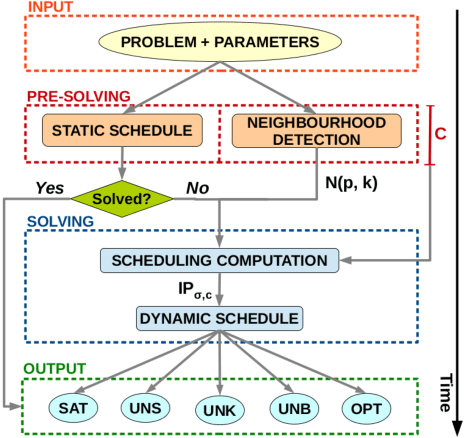

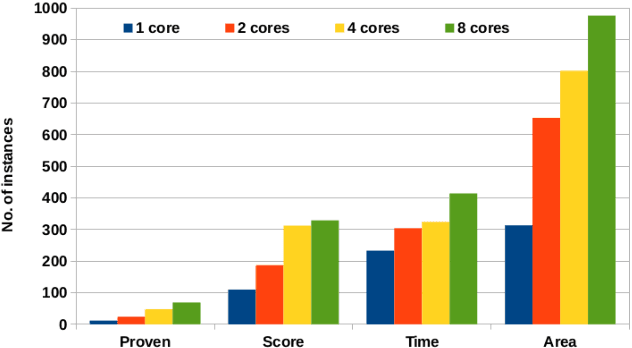
Abstract:*** To appear in IJCAI 2015 proceedings *** In Constraint Programming (CP), a portfolio solver uses a variety of different solvers for solving a given Constraint Satisfaction / Optimization Problem. In this paper we introduce sunny-cp2: the first parallel CP portfolio solver that enables a dynamic, cooperative, and simultaneous execution of its solvers in a multicore setting. It incorporates state-of-the-art solvers, providing also a usable and configurable framework. Empirical results are very promising. sunny-cp2 can even outperform the performance of the oracle solver which always selects the best solver of the portfolio for a given problem.
SUNNY: a Lazy Portfolio Approach for Constraint Solving
May 13, 2014
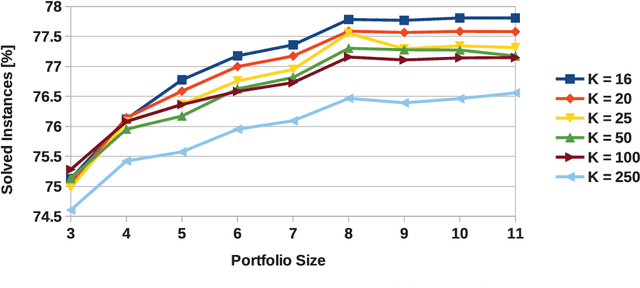
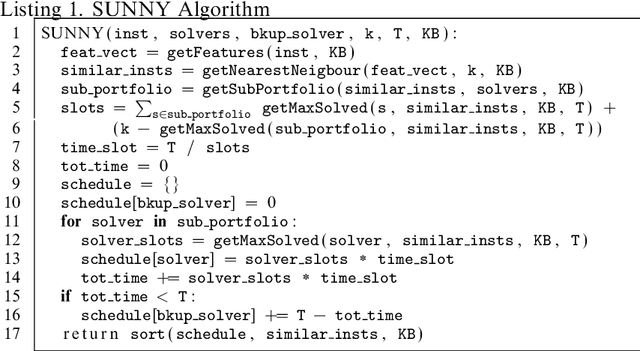
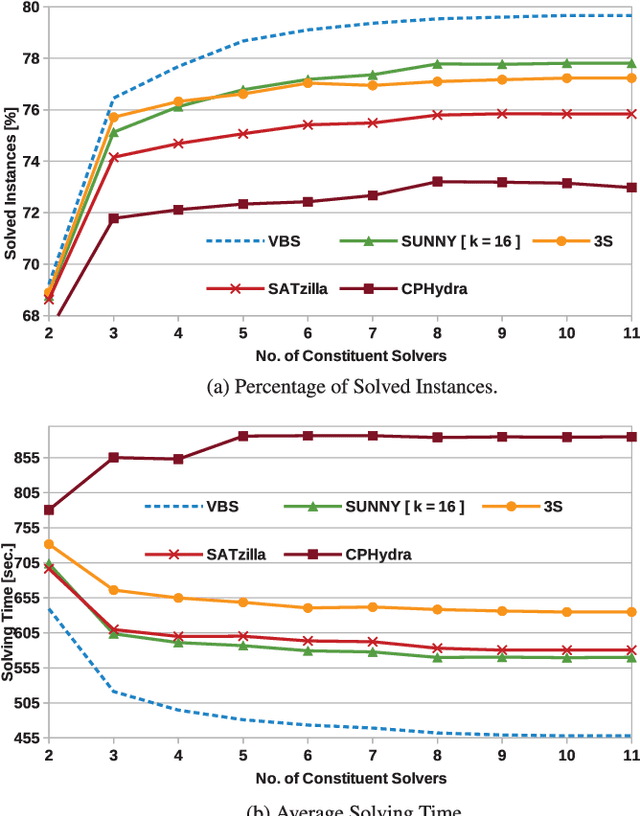
Abstract:*** To appear in Theory and Practice of Logic Programming (TPLP) *** Within the context of constraint solving, a portfolio approach allows one to exploit the synergy between different solvers in order to create a globally better solver. In this paper we present SUNNY: a simple and flexible algorithm that takes advantage of a portfolio of constraint solvers in order to compute --- without learning an explicit model --- a schedule of them for solving a given Constraint Satisfaction Problem (CSP). Motivated by the performance reached by SUNNY vs. different simulations of other state of the art approaches, we developed sunny-csp, an effective portfolio solver that exploits the underlying SUNNY algorithm in order to solve a given CSP. Empirical tests conducted on exhaustive benchmarks of MiniZinc models show that the actual performance of SUNNY conforms to the predictions. This is encouraging both for improving the power of CSP portfolio solvers and for trying to export them to fields such as Answer Set Programming and Constraint Logic Programming.
An Enhanced Features Extractor for a Portfolio of Constraint Solvers
Apr 02, 2014Abstract:Recent research has shown that a single arbitrarily efficient solver can be significantly outperformed by a portfolio of possibly slower on-average solvers. The solver selection is usually done by means of (un)supervised learning techniques which exploit features extracted from the problem specification. In this paper we present an useful and flexible framework that is able to extract an extensive set of features from a Constraint (Satisfaction/Optimization) Problem defined in possibly different modeling languages: MiniZinc, FlatZinc or XCSP. We also report some empirical results showing that the performances that can be obtained using these features are effective and competitive with state of the art CSP portfolio techniques.
An Empirical Evaluation of Portfolios Approaches for solving CSPs
Jan 05, 2014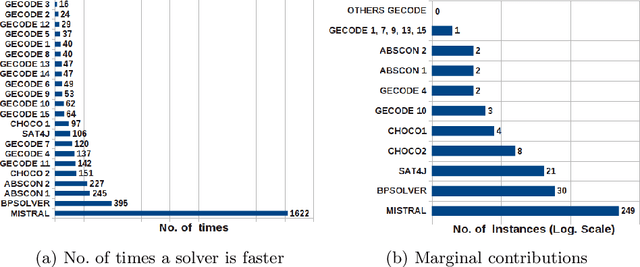
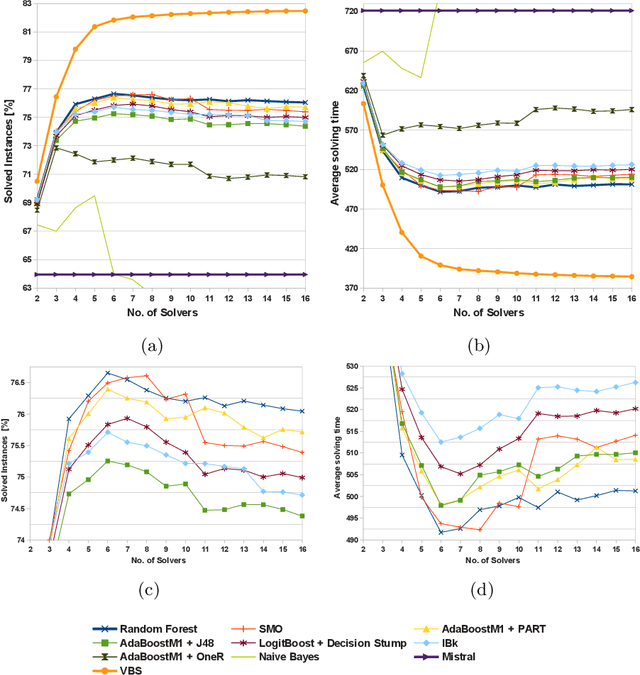
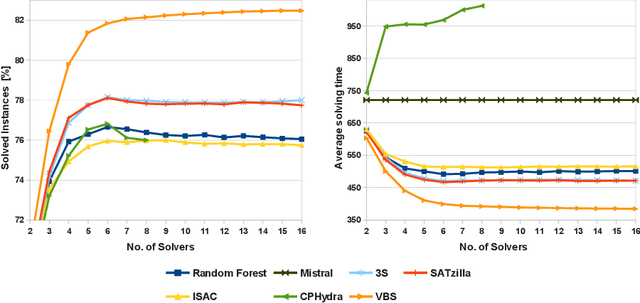
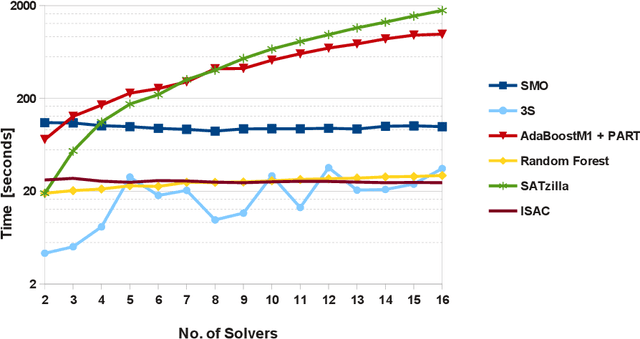
Abstract:Recent research in areas such as SAT solving and Integer Linear Programming has shown that the performances of a single arbitrarily efficient solver can be significantly outperformed by a portfolio of possibly slower on-average solvers. We report an empirical evaluation and comparison of portfolio approaches applied to Constraint Satisfaction Problems (CSPs). We compared models developed on top of off-the-shelf machine learning algorithms with respect to approaches used in the SAT field and adapted for CSPs, considering different portfolio sizes and using as evaluation metrics the number of solved problems and the time taken to solve them. Results indicate that the best SAT approaches have top performances also in the CSP field and are slightly more competitive than simple models built on top of classification algorithms.
 Add to Chrome
Add to Chrome Add to Firefox
Add to Firefox Add to Edge
Add to Edge